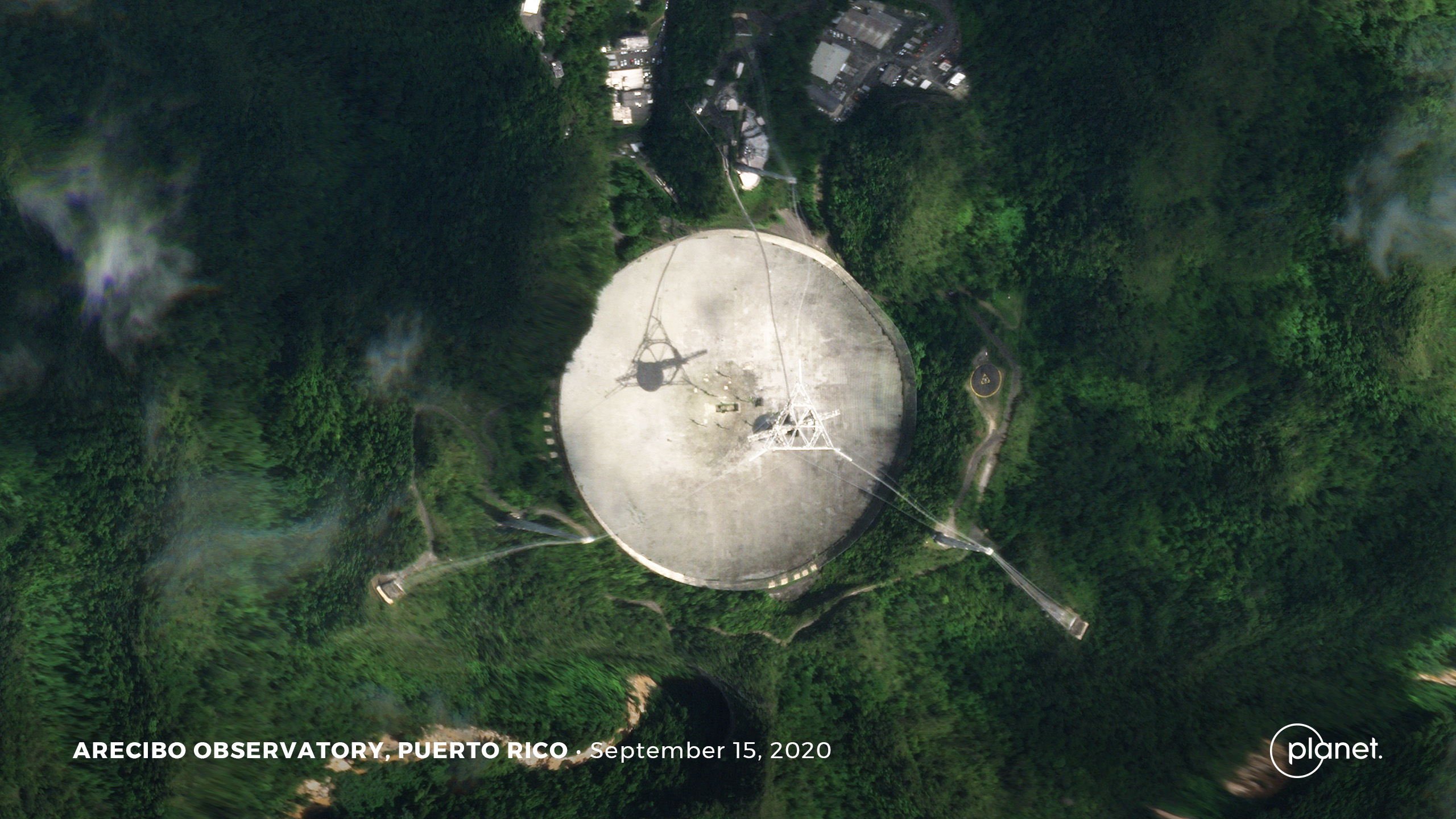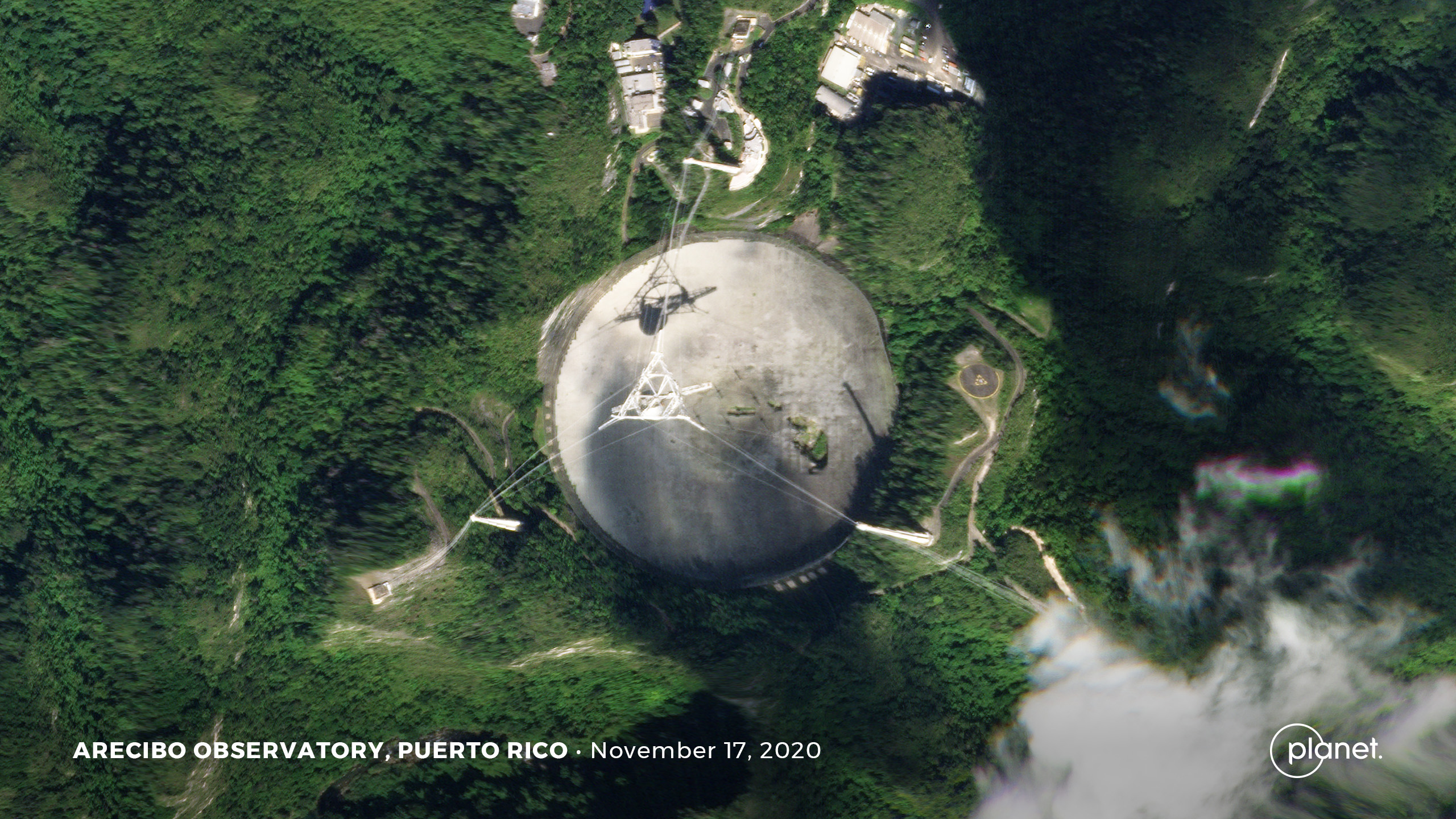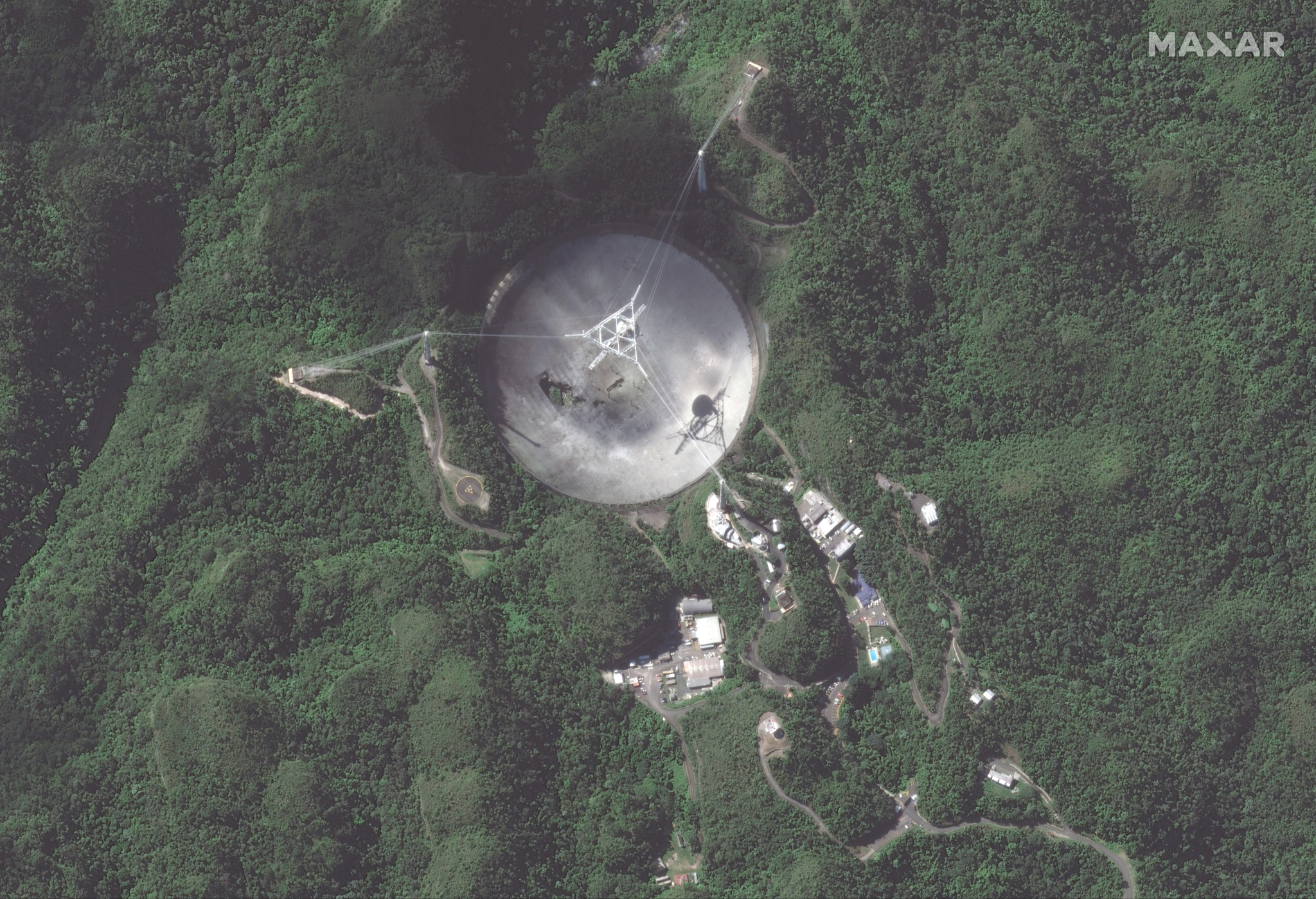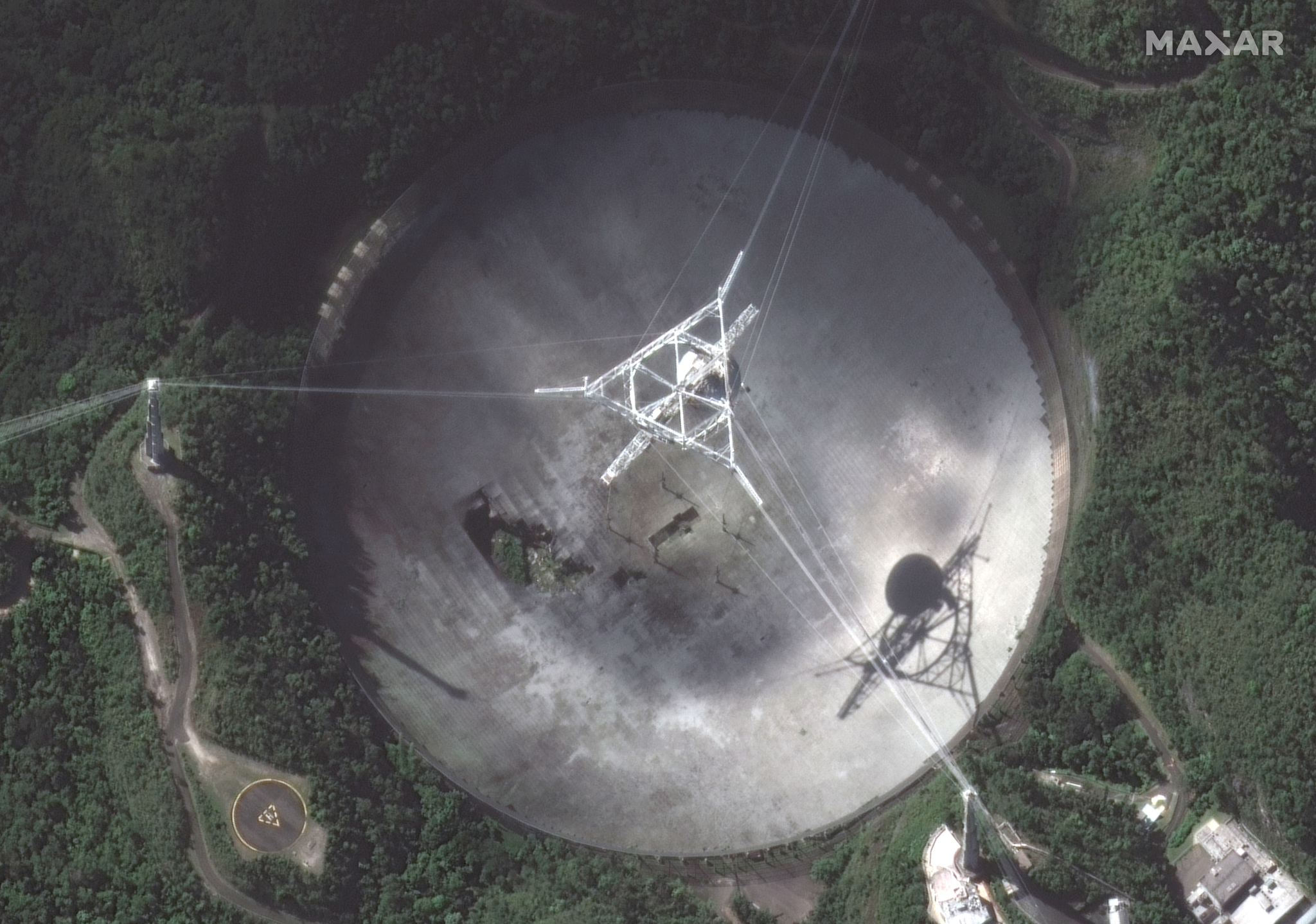Arecibo radio telescope, damaged beyond repair, seen from space
Satellites spotted gashes in the damaged Arecibo Observatory, which is set to be decommissioned by the U.S. National Science Foundation (NSF).
The 57-year-old radio telescope has sustained two cable failures which has made its massive dish too unstable to safely repair, according to the NSF. The cable failures have also damaged the massive dish, which spans a whopping 1,000 feet (305 meters) across, gouging holes in its delicate metal panels.
Those holes in the telescope's large dish and vegetation growing below the historic piece of technology can be seen from space in a new, high-resolution satellite image taken by the Dove satellite constellation operated by Planet, a company based in California. The image was produced on request from Nature, according to a statement.
Related: Losing Arecibo Observatory would create a hole that can't be filled


The NSF will decommission the telescope on account of the damage, the agency announced at a news conference held on Nov. 19
"According to engineering assessments, even attempts of stabilization or testing the cables could result in accelerating the catastrophic failure," Ralph Gaume, director of the NSF's astronomy division, said during the news conference. "Engineers cannot tell us the safety margin of the structure, but they have advised NSF that the structure will collapse in the near future on its own."
Maxar's WorldView satellite also recently imaged the observatory from space.
Get the Space.com Newsletter
Breaking space news, the latest updates on rocket launches, skywatching events and more!


In the satellite imagery you can see small green spots dotting the gray dish. That greenery is plant life local to Puerto Rico, where the observatory sits, growing below the dish and seen through gashes left by the two cable failures that happened in August and in November.
When the first cable slipped, it hit panels around the edge of the telescope's dish; when the second cable broke, it tore large rips in the interior of the dish, according to Nature.
Email Chelsea Gohd at cgohd@space.com or follow her on Twitter @chelsea_gohd. Follow us on Twitter @Spacedotcom and on Facebook.
Join our Space Forums to keep talking space on the latest missions, night sky and more! And if you have a news tip, correction or comment, let us know at: community@space.com.

Chelsea “Foxanne” Gohd joined Space.com in 2018 and is now a Senior Writer, writing about everything from climate change to planetary science and human spaceflight in both articles and on-camera in videos. With a degree in Public Health and biological sciences, Chelsea has written and worked for institutions including the American Museum of Natural History, Scientific American, Discover Magazine Blog, Astronomy Magazine and Live Science. When not writing, editing or filming something space-y, Chelsea "Foxanne" Gohd is writing music and performing as Foxanne, even launching a song to space in 2021 with Inspiration4. You can follow her on Twitter @chelsea_gohd and @foxannemusic.









